Quiche is one of those deceptively simple dishes that should be easy to get right, but somehow isn’t quite. Far too often the crust is sodden, or the eggy filling is leathery and dry, or the add-ins overwhelm the texture of the quiche itself.
I’m no stranger to quiche-making. It’s one of my favorite light meals in summertime, and as a trained chef and restaurateur I’ve made plenty of them at home and in the line of work. We’ve also recently added small flocks of quail and laying hens to our little rural acreage, and they’re giving us lots of eggs, so I can confidently predict that quiches will show up regularly on my table over the coming months! But the key to turning out a good quiche lies in a handful of small details. Here are a dozen of my most useful tips to help yours turn out beautifully every time.
1. Bake your quiche in a deep pan
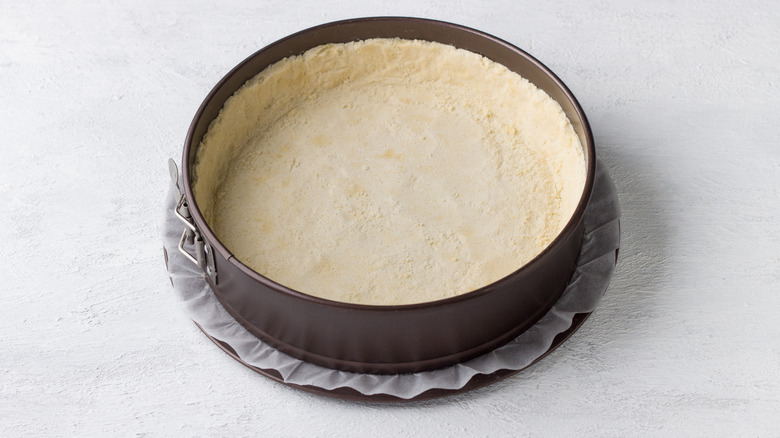
First things first: Home cooks often bake their quiches in a pie plate, because it’s the first thing that comes to mind. But this is a bad idea. They just aren’t deep enough, so the custard filling (a quiche is essentially just a savory custard) tends to overcook and toughen. A deep-dish pie plate will do in a pinch, but you probably have a better alternative already in your kitchen.
Ideally, your quiche needs to be 2 to 2 ½ inches deep in order for the custard to cook properly. A springform pan is one of the few that most of us own, and it gives the required depth. It’s also easy to serve from, because once the quiche has baked and cooled, you can simply open the spring and either transfer it to an attractive plate or serve it right from the pan’s bottom. Alternatively, if you have a cake pan with a fixed ring but a removable bottom, that will work too.
Restaurant supply stores often sell cake rings, which are just the round sidewall of a cake pan. Chefs and bakers like them, because you can set several of them on a sheet pan and bake multiple quiches (or cakes) at once. You can find those online. At home, I use a made-for-the-purpose quiche pan, 9 ½ inches in diameter and over 2 inches deep, with attractive fluted sides and a lift-out bottom. It’s worth owning one, if you love quiche.
2. Don’t sweat over the crust for your quiche
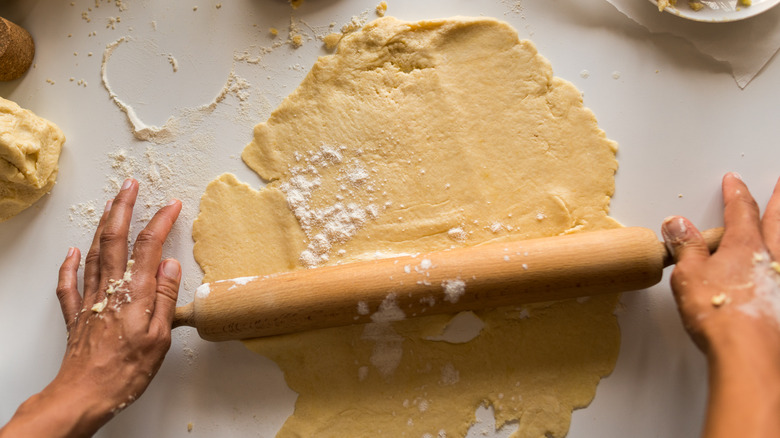
This may seem like strange advice. In fact, in an article about quiche-making mistakes here at Look, five of the 14 points involved the crust. So here’s how to make a “perfect” quiche crust: Mix a special dough called pâte brisée, chill it, roll it, chill it again, shape it into your pan, chill it once more, fill it with weights and par-bake it (aka blind baking), then brush it with egg and bake it some more.
Simple, right? Um… okay, not so much. If you’re a confident baker, and you’re up for the challenge, I encourage you to jump right in and give it a shot. Even if it’s not quite perfect, it’ll still be pretty good. But at the end of the day, you’re not eating a quiche for the crust. A tasty filling with the right texture is more important, and the crust just needs to not let you down.
So if you’ve got regular pie crust dialed in, use that (but by all means par-bake it, and give it that brush of egg to keep it from getting soggy). If pie crust is your personal nemesis, buy it ready-made from the supermarket. Or use puff pastry, or even (gasp!) don’t use a crust at all. Crustless quiche is very much a thing, and it’s still good. So don’t sweat the crust — and move on to the good stuff.
3. Nail the dairy/egg ratio so your quiche has the right texture
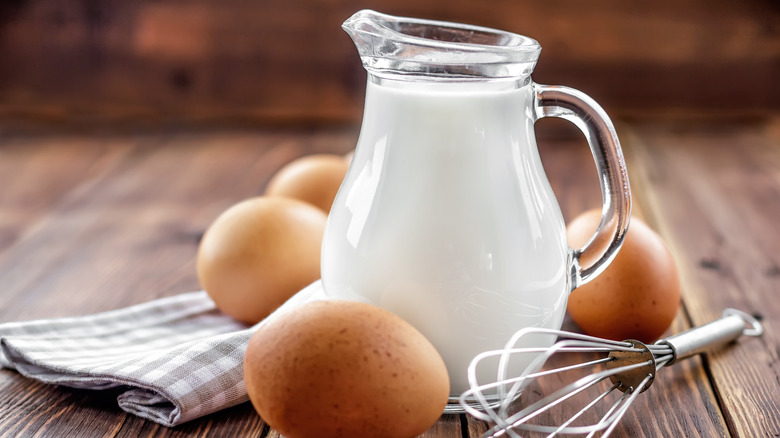
One of the most important things about quiche-making is getting the texture right. Using a deep pan is your starting point, but you also have to nail the ratio of eggs to dairy. If you have too much milk or cream, the filling will be loose and won’t set properly. If you have too much egg, it will be firm and spongy (even leathery!), rather than silky-smooth.
The rule of thumb for eggs in quiche is 1 large egg for every half-cup of dairy, but there’s a bit of wiggle room. Some people just like their quiche a bit firmer — and if that’s you, then by all means add an extra egg. An extra egg is also a good idea if you’ll be using lots of high-moisture add-ins, because it can help bind up that extra liquid.
Eggs also vary somewhat in size, and if yours are bigger or smaller than a standard large egg, you may need to experiment a little to arrive at just the texture you like. The experienced egg-marketing folks at the Incredible Egg website have a handy egg size conversion chart you can refer to if needed. On average, 5 large eggs equal a cup. So an egg for every half-cup of dairy is almost but not quite a 2:1 ratio of cream (or milk) to egg. As long as you’re in this ballpark, you’ll be fine.
4. Don’t overdo the add-ins in your quiche
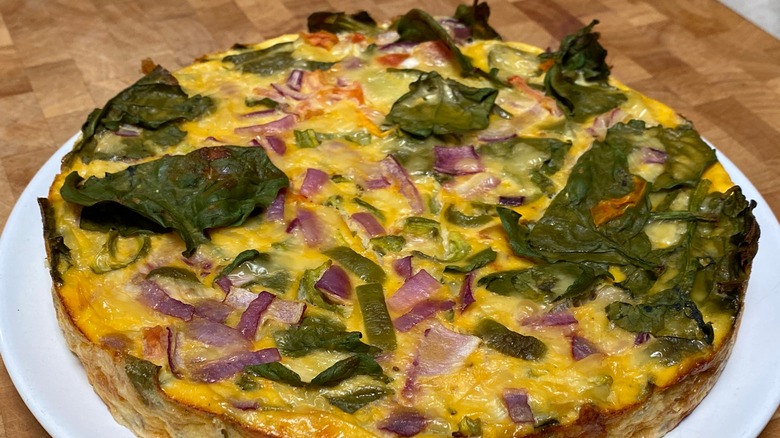
Kathleen B Anderson/Shutterstock
Most standard quiche recipes for home cooks are intended for a 9-inch pan, and they call for 1 ½ cups of dairy plus 3 eggs. That adds up to just a little over 2 ¼ cups of filling for the whole dish (though some recipes may call for 2 eggs and others for 4, so it’s variable). The point is that there’s only so much custard to hold everything together, and the beauty of a quiche lies in that silky custard texture. Getting too enthusiastic with your add-ins can quickly overload the quiche, making it nearly impossible for the custard to hold everything together and still set to the right texture.
Some recipes counter that by using more eggs and less dairy (like this spinach quiche recipe), but the result is more a frittata than a classic quiche. You can cheat a little where cheese is concerned, because cheese melts right in and enriches the custard. But overall, my experience is that you should consider 1 cup of total add-ins to be the practical limit. It’s enough to provide lots of contrasting colors and textures, without losing that classic quiche texture.
5. Use a pinch of nutmeg in your quiche filling

Yes, nutmeg. And no, it won’t make your quiche taste like pumpkin pie. In classical French cuisine, you’ll almost always see recipes calling for a pinch of nutmeg whenever heavy cream is used. A pinch is the operative word. If you’re doing it right, you shouldn’t be able to identify the nutmeg flavor at all, but it somehow makes cream taste just a little bit richer and creamier. It’s not confined to elevated dishes, either: A pinch of nutmeg (or better yet, a light grating from a whole nutmeg) will give you a better alfredo sauce, too.
Nutmeg also has an affinity for eggs, and it brings out the nuttiness in bold-flavored cheeses like Gruyere. It does the same for spinach, another ingredient that’s paired with nutmeg in everything from classic haute cuisine to these spinach crespelles. So if you should happen to be making a quiche with spinach and Gruyere (a pretty good combination, for the record), the nutmeg will just make everything taste better.
6. Know your oven’s quirks when you bake quiche
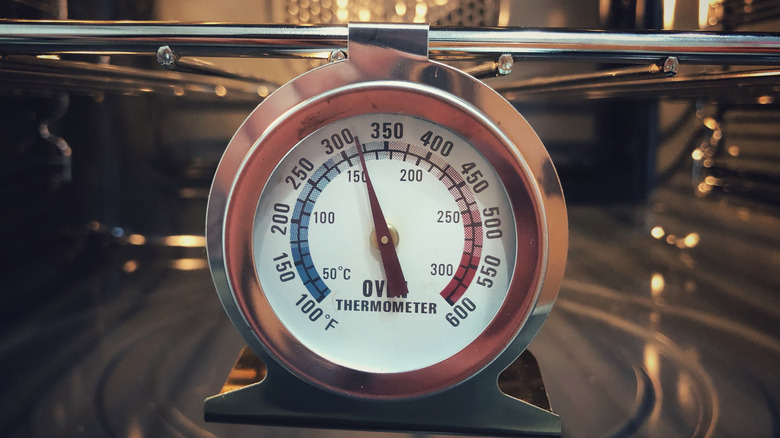
If there’s one thing that can make even the most experienced bakers grumpy, it’s the variability between one oven and the next. We often speak of ovens that “run hot” or “run cool,” and that’s just a polite way of saying that you can’t trust the thermometer in your oven. Using an inexpensive heatproof thermometer to double-check your oven’s temperature can save you a lot of heartbreak, with quiches and anything else you bake or roast.
Another irritation is that the circulation of hot air in your oven is unpredictable (convection ovens are better, but still don’t quite heat evenly). This means that some parts of your oven are hotter and cooler than others. Quiches require steady, moderate heat for the best texture, so it’s important to know and avoid your oven’s hot spots.
There are a couple of easy, inexpensive ways to get a visual sense of where those hot spots are. One could use a piece of parchment paper to map out the oven’s hot spots. Another widely used tip calls for finding oven hot spots with bread, or even breadcrumbs. In each case, you’ll set the oven for the usual 350 F, and then watch to see where the dark spots develop on the parchment, the now-toasted bread, or the breadcrumbs. When you bake your quiche, position it away from both hot and cold spots, in a place where the bread or parchment browned gently and evenly.
7. Use fresh herbs in your quiche, not dried
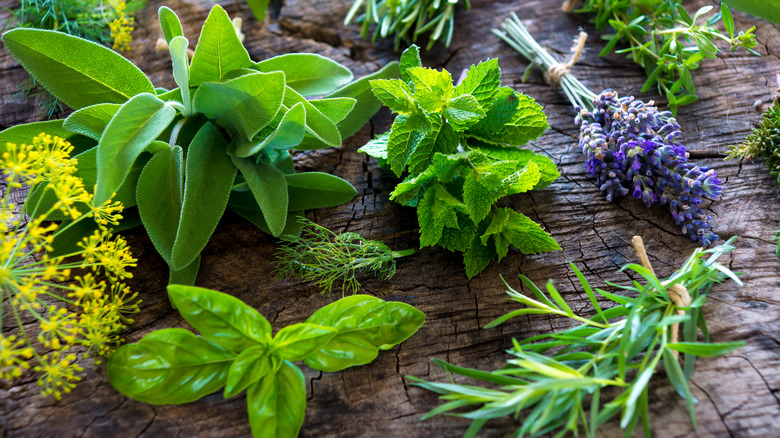
Have you ever needed a tablespoon or two of a fresh herb for a recipe, but had to buy a fist-sized bunch at the supermarket because that’s how it was sold? Well, quiches are a great place to use up those leftover herbs.
There are a couple of reasons why this is a really good idea. First and foremost, fresh herbs just plain make a better quiche. There are also a lot of herbs that lose much of their bright, fresh flavors and subtlety when dried, including sage, dill, chives, and cilantro. Then there’s the question of how long those dried herbs have spent in your panty: Though dried herbs don’t expire in the food safety sense, they can and do lose flavor as they get older. They can also acquire stale, musty flavors that become a downright liability in your food.
So when you’re making a quiche, reach for fresh herbs before dried. And if you don’t actually remember how long those bottles of thyme and oregano have been in your spice rack, do yourself a favor and replace them. You should buy new dried herbs at least yearly, if they’re kept in a dark and cool spot, or every six months if they sit out in direct light in a spice rack. (Tip: Save money by buying herbs loose and refilling your existing bottles.)
8. Don’t top the quiche with cheese, bottom it with cheese instead
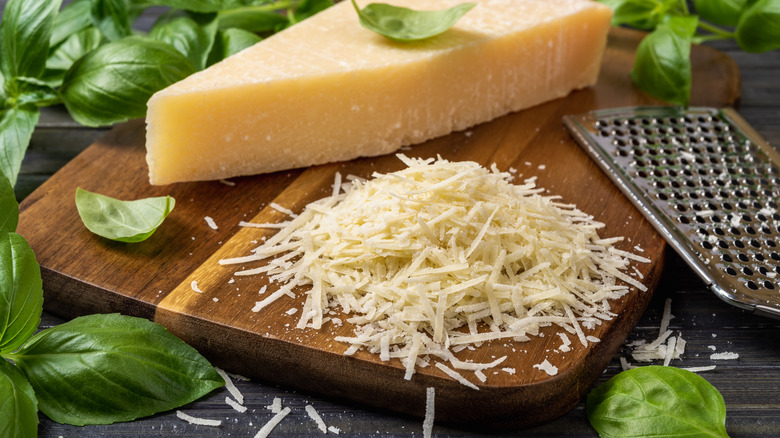
Many recipes remind you to brush the crust of your quiche with egg and return it to the oven for a few minutes, which glazes the bottom of your crust, before adding the custard filling. That helps seal the crust, so the eggs and cream can’t soak into it and make it soggy.
There’s another ingredient that can help serve the same purpose, and it’s cheese. You may think of cheese as a topping for dishes like quiche, where it will melt and turn into a golden-brown crust. And that’s fine — but you should also “bottom” your quiche with part of the cheese your recipe calls for. Spread it evenly over the crust before layering in the rest of your add-ins, along with the custard filling.
Why? Well, as heat from the element at the bottom of your oven works its way into the quiche, it will melt the cheese before the quiche filling sets. That layer of melted cheese, like the brushed-on egg wash, will help keep the creamy filling from soaking into your crust and making it sodden and doughy. If it means using extra cheese so you can have some at the bottom and some at the top, well… that’s a sacrifice most of us are willing to make.
9. Shield the crust to keep it from over-baking

Fox Run/Webstaurant Store
My advice to not sweat the crust is valid, but one step you shouldn’t skip is par-baking the crust. Crusts need a relatively high temperature in order to become crisp and flaky, while the custardy filling of your quiche needs a moderate temperature to set to its proper texture.
Par-baking the crust at a higher temperature, and then turning down the oven to bake the quiche filling, neatly solves this problem. Your crust has a chance to set before it’s flooded with the creamy custard, and the filling in turn can bake gently at the lower temperature once the crust has a head start. The only downside to this is that if you’ve par-baked for a little too long, the crust around the edges of your quiche may become overbaked and dark.
Most kitchenware stores and department stores sell lightweight aluminum or silicone crust protectors (my own is silicone, but they both work), which will help prevent a burnt pie crust. When the edges of your crust reach the right shade of gold, simply open the oven, drop the cover over your crust, and close it again. As a bonus, it also helps keep the custard from overbaking near the edges of the pan before the middle can set. If you don’t have a crust protector, wrapping the edges of the crust with aluminum foil is an easy and inexpensive hack that does the same job.
10. Put your quiche on a sheet pan
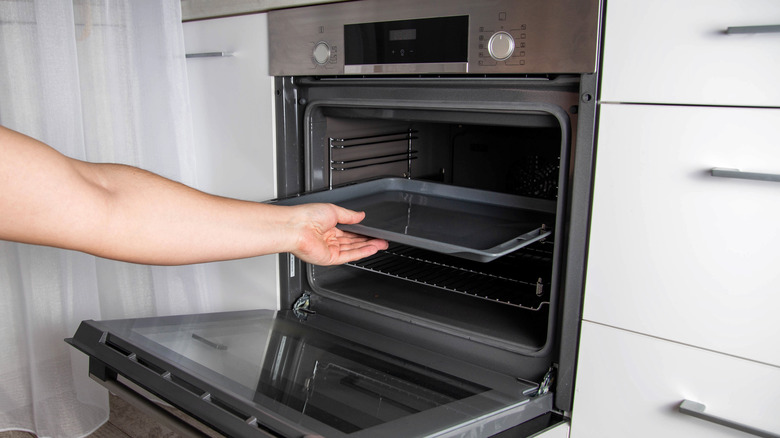
You can put your quiche pan directly on the oven’s rack, and I’ve done it myself for years. But I’ve come to prefer having a sheet pan under my quiche when I slide it into the oven, for a handful of practical reasons. First, the sheet pan helps protect your quiche from the oven’s hot spots. It also catches spills or leaks, so the egg mixture doesn’t bake itself onto the bottom of your oven.
A sheet pan may also meet a practical need: My kitchen is cramped, and I have to stand to one side when I open the oven door. It’s hard to lean that way with a full quiche and not spill something or have the add-ins slide to one side of the pan. I opt to slide out the oven rack, and put a sheet pan down on it. Instead of reaching into the oven from an awkward angle, I can face the pulled-out rack and its sheet pan squarely and set the crust-lined quiche pan down gently on it, with the add-ins remaining in place.
With the quiche crust secure and level on its sheet-pan base, I can carefully pour or ladle my custard over the add-ins, so they stay evenly distributed. Then, I slide the rack back into the oven and close the door. The risk of spilling is a lot lower (as long as your racks slide reasonably well), and the finished quiche won’t be lopsided.
11. Choose your quiche add-ins for high impact
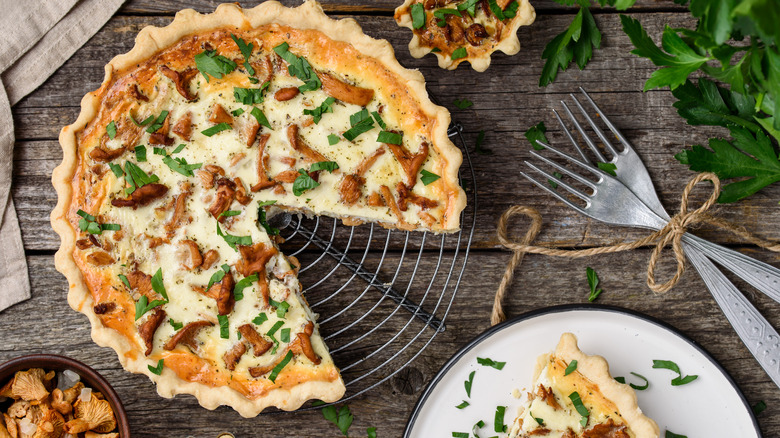
I’ve made the case that you shouldn’t overload your quiche with add-ins, and that 1 cup recommendation for them is about right. But with that kind of a constraint to work around, it’s important to pick add-ins that will give you the maximum impact.
Cured meats like ham, bacon, and sausage pack lots of flavor into a minimum of volume, so they’re a slam-dunk option (which is why bacon features prominently in classics like quiche Lorraine). The same goes for fresh herbs, spices, aromatic vegetables like onions and garlic, and assertive or funky cheeses like blue cheese, goat cheese, and Gruyere. The latter is a winner on both the flavor and texture fronts, because Gruyere’s meltiness can help make your quiche extra-creamy. Soft cheeses like Brie or even cream cheese aren’t as flavorful, but they also add richness and can help stabilize the filling when your quiche uses lots of wet ingredients, such as zucchini or mushrooms.
Finally, don’t forget visual appeal. Fresh herbs and brightly colored vegetables, like sweet peppers or cherry tomatoes, can make your quiche a treat for your eyes as well as your palate.
12. Simplify your quiche prep with eggs in a carton
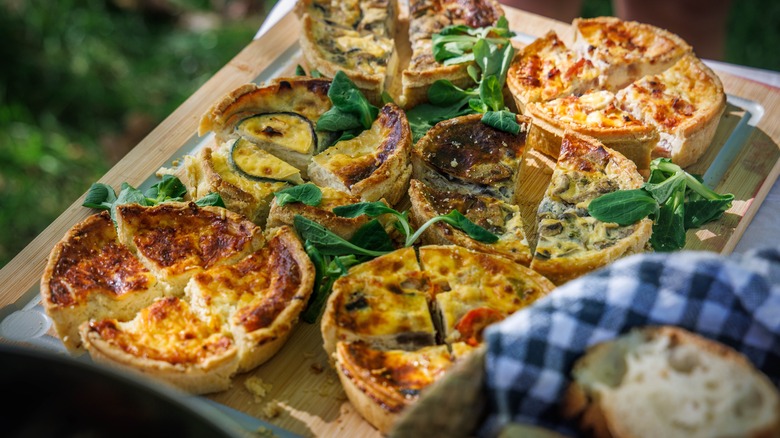
If you cook with physical challenges, or need to make several quiches for a big get-together, or just hate getting your hands sticky, you might find it awkward using regular in-shell eggs for your quiches. It takes time and sometimes means having to remove pieces of eggshell from your mixing bowl. But there is an easy alternative, and it comes in the form of liquid eggs. They’re typically sold in cartons similar to milk cartons and may be found in the refrigerator or freezer section of your supermarket.
Liquid eggs have a lot of advantages over shell eggs. For one thing, they’re pasteurized, so that’s an automatic food safety upgrade. Pasteurized eggs will also keep for longer in your fridge (and indefinitely in your freezer), so they’ll be there when you need them. They’re also less costly on a per-egg basis, which is one way to beat high egg prices. And of course, they’re very convenient for making quiches, frittatas, and other egg-centric dishes.
To use the liquid eggs in your quiche, just measure out the quantity of milk or cream the recipe calls for, and then measure half of that quantity in eggs (so for a recipe using 1 ½ cups of cream, you’d use ¾ cup of eggs). Whisk in the seasonings and any add-ins, and you’re good to go.
Static Media owns and operates Look and Mashed.






